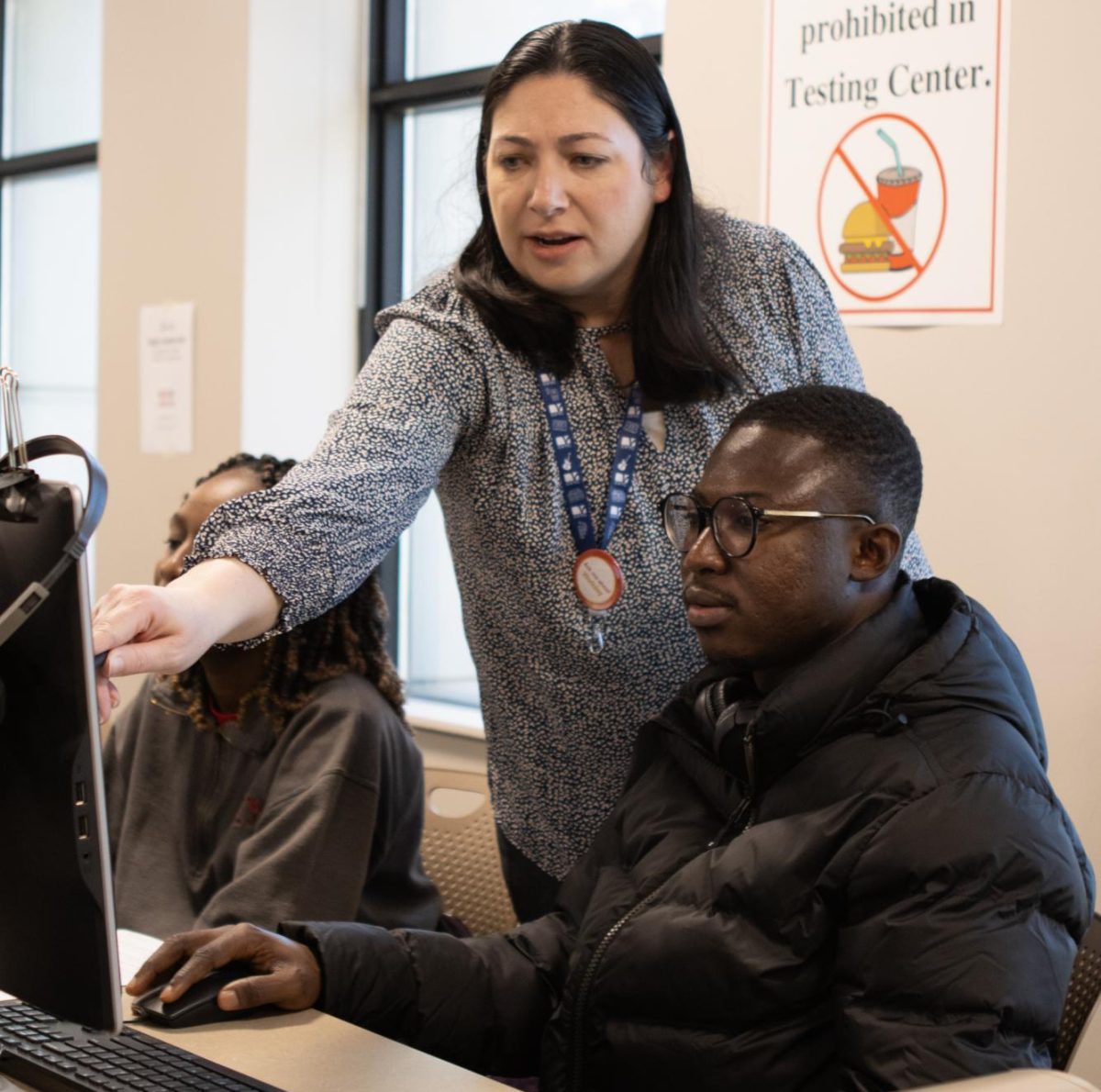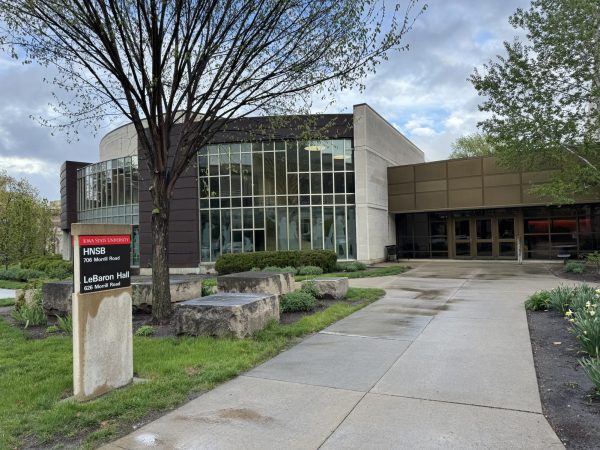ISU students present final bike share proposals
May 11, 2014
The students of the Iowa State Bike Share Studio presented their final proposals to a large crowd of family, friends, peers and faculty May 9.
The presentation opened with Government of the Student Body President Hillary Kletscher explaining her commitment and the organization’s connection to the studio. Kletscher expressed her admiration for the studio and the students that worked to construct the program.
“What this really is, is a student initiative … taken on a big scale,” Kletscher said. “That’s something you don’t often see from students. It’s rare that you see a long-term investment.”
The first group explained its work, including student surveys, testing Chicago’s “Divvy” bike share program, modeling Osborne Drive and the other intricate processes behind the creation of its proposal.
Calling its design “’58,” a reference to Iowa State’s founding, the group explained the design and features of its prototype. It also went into detail on the costs of its program, noting a “gross overestimate” at $4,000 per unit, which includes one bike and two docks. After the presentation, one adviser noted that while the overall cost estimate would be around $4,000 per unit, the bike would be far cheaper than the $3,000 proposed, and the advanced, electronic docking system would be worth far more than $500 per unit.
The first group also proposed implementing “common” gray, “rare” red and yellow, and “legendary” bikes as a fun way to make the bikes stand out. Legendary bikes would be donated by other classes or organizations with a special design to it, such as a penny-farthing or high-wheel. Another major topic was the use of the ISU ID card to check out and back in the individual bikes from electronic docks.
The second group began by explaining its concept after finding that 25 percent of students already utilize bikes when available. Their design focuses on a “practical” format, utilizing leather, steel, and black locust wood for durability.
“We want this to be a practical tool,” the group members explained. “To get to class or wherever. It’s a transportation device.”
The second group also discussed its prototype for storage, noting observations of various bike riders’ struggles with carrying food, gym bags and other bulkier items. The group presented its plans for having nine stations at different hotspot locations, such as Parks Library, State Gym, and Lied Recreation Athletic Facility.
The group included its own study of Chicago’s “Divvy” system and the “Citi Bike” programs, noting its inefficiency. The second group also featured a “guest pass” system as well as its plans to integrate the program into the existing MyState app.
Beau Easley, a member of the group, said during questioning that maintenance and the GPS system would go through CyRide.
The third group opened its presentation by discussing poll responses from ISU students who showed reluctance to utilize a bike share program. It also reviewed specific comments from the surveys, noting a lot of students take issue with cost, time constraints and availability.
“If it was convenient, they would use it,” Gerardo Garcia, a member of the group, said referring to comments left on the student surveys regarding the bike share program. “If the location was reasonable … if it was easy to use.”
The group also studied aesthetic aspects of other bike share programs, and of Iowa State’s campus environment and students. Additionally, the group highlighted their plans for bike docking, detailing 13 stations and a proportionate number of docks per station.
The group went into detail about the cheaper cost of the entire 100-bike “CyShare” system in comparison to a single CyRide bus. The group also expressed its desire to work with CyRide in the establishment and maintenance of the bikes and docking stations.
“The advantages, in addition to costing less than a bus, is that [the bikes] provide a more direct route for the user,” the group said. “They’re available at any time in set locations that the users can know where they’re going to be at all times.”
The group also had plans for utilizing QR codes and a new app that would provide locations, statistics and even advertised coupons as rewards for various “challenges.” Other fourth generation technologies would connect with the GPS and mobile app aspects as well. Special materials included Kevlar tires with reflector strips and a hydrophobic seat.
Following the third group the audience was given cards to vote on which group’s system it would be most interested in having implemented on campus. Once the system is selected, the studio will begin its final preparations in the fall, including the app, the bike designs and working with the university on the establishment of the program.
















